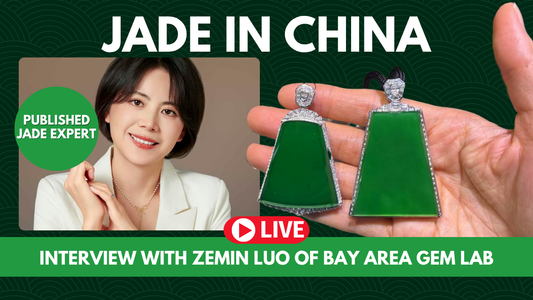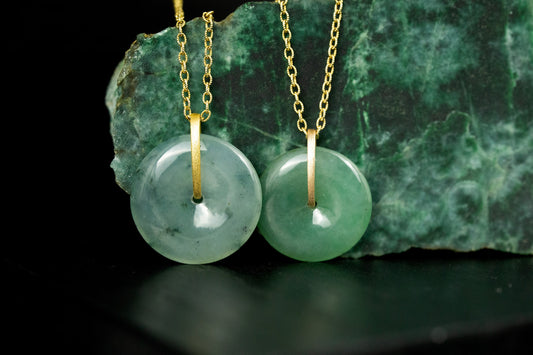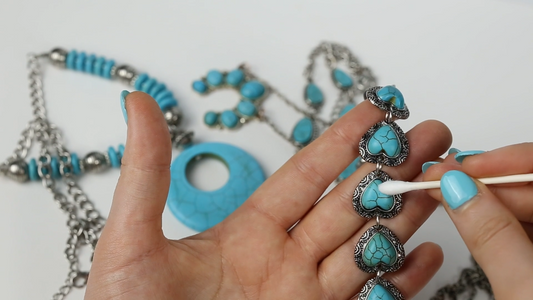Which jade has translucency?
There are two gemstones that are gemologically called "jade" in the US: Nephrite Jade and Jadeite Jade. Nephrite Jade is a microcrystalline amphibole, usually tremolite, that has a fibrous crystal structure. The term "jadeite jade" matches the Chinese definition of Fei Cui, which is a pyroxene aggregate with a granular crystal structure mostly or solely comprised of omphacite, kosmochlor, or jadeite.
Both jades can be translucent, meaning that light can shine through them.
However, jadeite jade in it's highest quality is known for exceptional translucency which is sometimes called "internal glow."
Cause of translucency in jadeite jade
The cause of translucency in jadeite jade lies in its granular structure. Jadeite jade is formed from metamorphic rocks, which means that it is created when existing rocks are subjected to high pressure and heat over time. During this process, the original minerals in the rock recrystallize and form new minerals, resulting in a tighter granular structure comprised of smaller crystals. This tighter structure allows more light to pass through the stone, creating the translucency that is characteristic of jadeite jade.

The more translucent, the tougher the jade
Imagine a jar filled with rocks of varying sizes. The larger the rocks, the more space there is between them, leading to instability and weakness in the group as a whole. However, if the jar is filled with sand, which consists of tiny grains with almost no space between them, a denser and more stable structure is created. Similarly, the internal structure of translucent jadeite jade is densely packed, making it tougher and harder to break compared to less translucent jades with a more open crystal structure
Translucent jade terminology
Two terms that are often used interchangeably but have distinct meanings when referring to jade are "Ice Jade" and "Icy Jade."
Ice Jade specifically refers to colorless, translucent jadeite jade. On the other hand, Icy Jade is used to describe the degree of translucency of jadeite jade, regardless of its color. For instance, any color of jadeite jade that has high translucency can be described as "icy," such as Icy Lavender, Icy Red, or Icy Green.
Water Jade is a term used to describe a particular color of jadeite jade that is translucent and green in color. Sometimes, this term is also used interchangeably with Icy Green, as both terms refer to the jadeite jade's translucency and color. It is important to note that Water Jade and Icy Jade are not the same thing, as Water Jade specifically refers to a translucent, green jadeite jade, while Icy Jade describes the degree of translucency of any color of jadeite jade.

The rarity of translucent red jade
Red jadeite jade is inherently rare due to its formation process through oxidation, which is usually present in a thin layer in the boulder's rind. Compared to other jadeite jade colors such as green, white, and lavender, the amount of red jadeite jade present in a boulder is significantly less. As a result, the scarcity of red jadeite jade further limits the likelihood of it being translucent.





